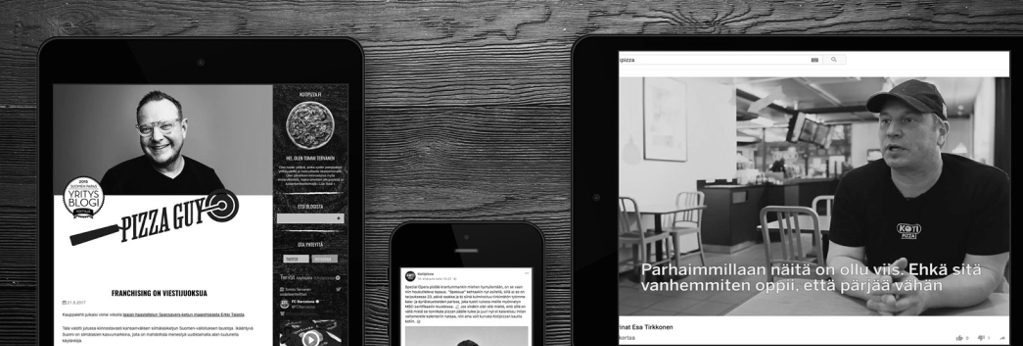Know what drives customers to walk by your competitor’s store and into yours, to drive more visits and more sales
What is it that Draws shoppers to stores in less convenient locations? I mean, if convenience was the only deciding factor, that would never happen. How can you as a retailer understand the outside draw and take actions that influence shoppers into taking a “Detour” to your store?
Groceries, it is a recurring chore that I, as a family father of three sons, need to complete all too often (with 6 gallons of milk and similar amount of yogurt each week, they tend to reoccur often). I usually go to Publix because it’s convenient and has a great assortment. But lately I find myself wanting to go the long way, looking for another store. I frequent Costco more and more, visit Aldi and Walmart even though they are much further away. I take a detour, go the extra mile to shop at a different location. Why do I take a Detour?
The understanding of why your shoppers take detours is one of the golden key‘s to increase visitation, and sales!
Are your shoppers really your most valuable asset?
The retailer is still essentially a merchant who makes money from the supplier through its services: store, shelves, shoppers and displays. And advertising revenue from suppliers is still the No 1 profit driver for the retailer. While many retailers talk about shoppers being their most valuable asset, many treat them as a necessary evil to be made reasonably satisfied when they frequent the store.
In the words of Herb Sorenson, “Why are retailers not paying more attention to the shopper? They are not paid to! One trillion dollars are paid to supermarkets (from suppliers) to manage their stores in a certain way.”
This is a business model that has been cultivated, refined and profitable for over 100 years, so it’s easy to see that it’s hard for the retailer to change.
Focus entirely on your No 1 asset
But the truth is that it is the shopper that empties the shelves, no matter if the shelves are physical or digital. And here is the big surprise, to the suppliers you are just a channel – as good as any other channel. This is something retailers are acutely aware of in the last 10 years with the rise of new channels such as Amazon.
So, what to do? Every retailer needs to put the shopper in the center of everything they do, if they are to survive. That means changing the way the retailer sees its shoppers, their No 1 current and future asset.
If you want to increase sales, there are essentially 3 ways to do it:
- Make existing customers buy more – increase basket size
- Make existing customers frequent your store more often – increase loyalty
- Increase number of customer – attract new shoppers
Looking at this list, all 3 are in the hands of the shopper. We are avid promotors of customer experience and loyalty, it is one of the best ways to be a profitable and successful business. But even if you are a star at customer experience and loyalty, you also need to attract new shoppers. This blog post focus on the last lever – attracting new shoppers.
Attract more Shoppers
For a business to survive, they must continually build and increase traffic to the point of sale at least enough to match natural attrition.
Simple in theory, but with the rapidly shrinking brick and mortar market, easier said than done. This is about leveraging all that you already have:
- Sales data
- Behavioral data
- Shopper insights
and combining them in a meaningful way. One such application area is shopper choice, i.e. why the shopper chose one store over another, and how that influence your business.
Location, location, location, right? It is immensely important. There is no arguing that the location is one of the deciding factors for a Brick and Mortar success or failure, but is that the whole story?
Yes, it is important to find the optimal store locations for a target group, housing, travel patterns, traffic, parking, competitors etc. But when the store is established, location analytics are irrelevant, right? I mean, why does it matter in the short term?
Location = only 1 of 4 drivers
If location is everything, how can a new IKEA store suddenly redefine what is prime commercial real estate in a market? The answer is quite simple. Shoppers like the IKEA experience and travel quite extensively to get to an IKEA store, and this is true for many different brands and stores. How is it that some customers are willing to go the extra mile to a store that is less convenient, and how can your stores become that “detour magnet”.
Models have long been used to model geography, sociodemographic data, travel patterns and competition using complex algorithms to understand how to place and position stores. But are they giving you the full picture?
For the shopper, only 4 major drivers exist for choosing which store to visit:
- Value/Price
- Convenience
- Experience
- Assortment
Examining this list, it is clear that location is not everything, just one of four decision criteria. In fact, convenience in form of a great location, can sometimes cost substantially more than the actual gains. It is therefore imperative for the retailer to understand how and why these choices are made.
Introducing “Detour” – learn from the shopper and grow your business
What is convenient? Well, it’s all in the mind of the shopper. What might be convenient for one shopper might not be for another.
Nepa has developed a Detour concept that leverages existing data flows in the shopper centric concept of subjective convenience, i.e. let the shopper define what is convenient and learn from that.
We use sophisticated data models based on purchase behavior, geolocation data, competitor sets and add the layer of shopper subjectivity to understand how the shoppers’ definition of convenience impacts each unique store.
Nepa Detour determines what drives the shopper to take the long way and how that can be nurtured, developed and expanded to grow your business.
4 cornerstones to drive sales growth
Detour is built on Nepa’s Consumer Science platform™. The platform brings to bear the true potential of data science to unleash consumer research’s full power. The detour application merges multiple data sources with shopper insights to deliver bottom-line results.
The Detour solution is a business development tool tailored to drive growth to your point of sales. The Detour application will provide you with powerful analytics and will help you understand the competitive landscape both in perceptions and sales. This understanding will provide you with insights into which specific departments you should focus on, either to improve or to communicate, to leverage your competitive strengths.
The four cornerstones of the Nepa Detour solution:
- Think local. Each store has a unique set of local factors influencing shopper store choice.
- Use multidimensional data. Use behavioral, geographical and sales data to understand behavioral patterns and how they influence each of your stores.
- Inside the shoppers’ mind. No amount of behavioral data can alone bring understanding of the choice process of the shopper, you need him or her for that, and you know what – it is different for different shoppers!
- Be inspired by data. The local store manager is best positioned to use the knowledge from the Detour application optimally. So, we developed Detour deliverables with him or her in mind – to inspire them in ways that promote action.
Nepa Detour analytics – download our product sheet
Want to know more? Download our product sheet or contact me or your Nepa account manager to discuss how to get more shoppers to take a “Detour” to your stores.
By the way, the reason for my own personal “detouring” that I mentioned in the beginning of this post is:
- Even though Publix has a great assortment, their prices are just too high compared to the value that I feel they provide. Especially in the Dairy category.
- If the customer experience would have been great at Publix, my Detours would likely be fewer.
- Publix doesn’t provide me with incentives to be a loyal customer. I know they have some sort of rewards program, but none has ever been offered or explained to me. That means Publix doesn’t have a clue that I am removing more and more of my business from their stores. This might be the greatest threat to their existence, not knowing what might hit them!
Erik Enecker
Chief Product Officer at Nepa USA & COO Global Product at Nepa













